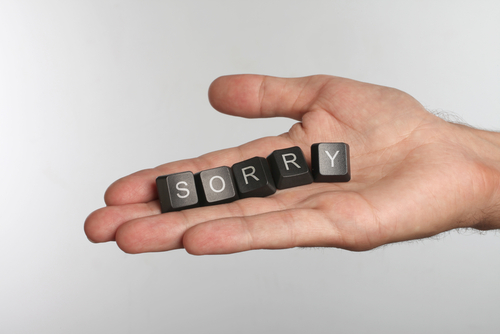Knowing how and when to apologize in the workplace is an important skill to hone. Though some advocate the approach of “never say sorry,” effective apologies show respect and rehabilitate damaged relationships, forming a foundational part of a positive work culture.
It can be challenging to apologize in the right way in the right place at the right time. Sometimes, an out of place apology may cause more problems than no apology at all by striking the receiver as tone deaf or by bringing renewed attention to a forgotten mistake. The question is, when are the right circumstances to apologize for a mistake in the workplace and how can leadership and employees apologize effectively?
How to Recognize When an Apology Is Warranted
Not every minor mistake requires an apology. In fact, apologizing too frequently at work can waste time and diminish the impact of future apologies. A quick “sorry about that” without further explanation may be enough for minor mistakes. However, if an error meaningfully harms business, creates significantly more work for the rest of the team or reflects a repeated pattern, then a bigger apology is likely warranted.
An unintentional or “small” mistake can also cause disproportionate impact on others, undermining the relationship until addressed. Even for a mistake that seems insignificant, it is crucial to use emotional intelligence to notice cues like a once friendly coworker who becomes withdrawn or teammates exchanging glances that might indicate the need for an apology. Teammates may feel uncomfortable asking for an apology, yet equally ill at ease with the relationship. If unable to read these signals themselves, consider confiding in an HR advisor or trusted coworker to gain perspective from a neutral third party.
How To Craft a Professional Apology
Once it becomes clear that an apology is required it is critical to think carefully about how the mistake took place, how the situation affected others and how to prevent similar mistakes in the future. This may require reviewing emails or work materials to recall details and researching tools or strategies to minimize errors.
To ensure that both parties feel comfortable expressing their feelings, apologies should take place in a private setting like a conference room. Though many people may feel eager for an apology to end, apologies should not be rushed. The more serious the mistake, the more time should be reserved to acknowledge the situation fully, identify solutions moving forward and hear out the injured party.
Ultimately, apologies are a conversation, not a presentation, and may involve as much listening as talking. While an apology should indicate regret, avoid dwelling on guilt and instead focus the apology on how the situation impacted business or the team and how similar circumstances will be prevented in the future. Prepare to learn about new ways that their actions hurt others and issue further apologies if needed.
Few people enjoy apologizing and for some, the idea of acknowledging a mistake at work is scary. By taking the time to consider whether an apology is needed and how events impacted others, employers and employees can contribute to a positive work culture and leave relationships stronger than ever.
Niki Jorgensen is a director of service operations with Insperity, a leading provider of human resources offering the most comprehensive suite of scalable HR solutions available in the marketplace. For more information about Insperity, visit www.insperity.com.
The post How and When to Apologize in the Workplace appeared first on HR Daily Advisor.
